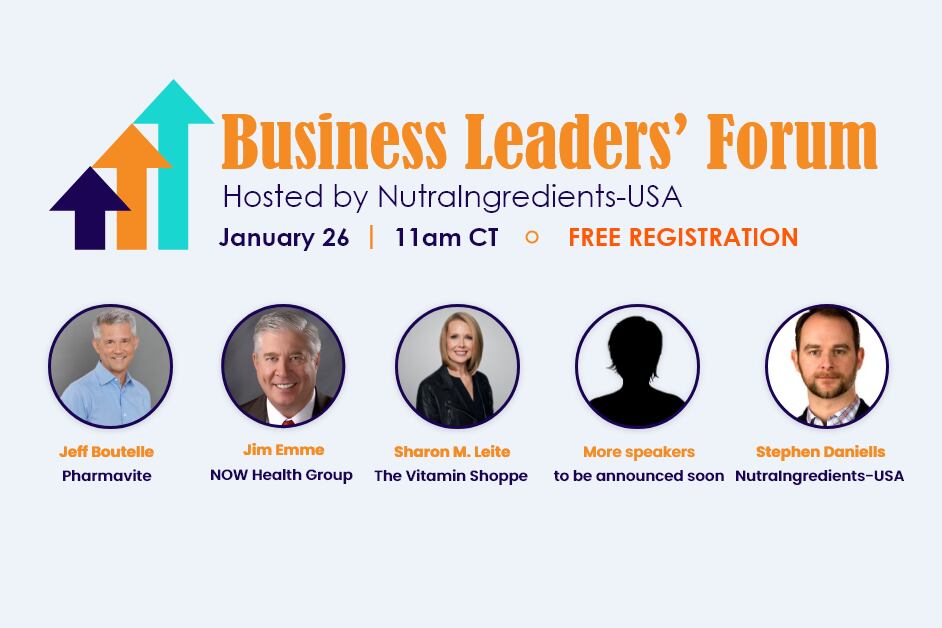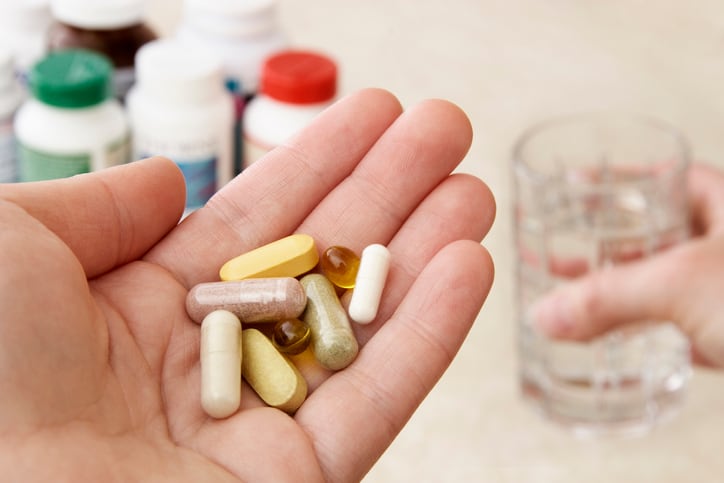Categories
Immunity
Industry chatter in the second half of 2021 suggested that the immune support category was transitioning back to seasonal as vaccines rolled out and people started feeling more confident about venturing out. But that was before the rapid emergence of the highly transmissible omicron variant. Regardless of whether omicron turns out to be less severe, immunity remains front of mind for many consumers, and formulations containing the likes of Vitamins D & C, zinc, elderberry, echinacea, probiotics and prebiotics are still hot. The key for brands will be product differentiation in an increasingly crowded marketplace, populated by similar formulations.
Cognitive & esports
Yes, there is a big difference between these categories when you think about the consumers themselves, but there is a lot of overlap when you look at the ingredients and their modes of action. Attention and focus, memory, and processing speed are endpoints that speak to many consumers, whether you’re hosting a channel on Twitch or just catching up with those holiday emails at your desk. The key to the esports channel will be to conduct studies with gamers, and we expect to see more of those published this year. In the meantime, the interest in any ingredient that could forestall age related cognitive decline—and the desperation of the older consumers headed down that path—will only continue to grow.
Stress management & Sleep
Linked to cognitive and immunity, the stress management and sleep categories have been growing steadily for several years and then took a big leap forward during the pandemic. The adaptogens, led by ashwagandha, have been driving a lot of innovative product formulation in the stress management category. Ashwagandha is also gaining a lot of attention in sleep with several human clinical trials showing significant benefits for the herb. CBD also plays in this space, so let’s see what happens with hemp in 2022. But sleep already has a few well-established ingredients with excellent consumer awareness, from melatonin and magnesium to chamomile and valerian. Will we see more cross-over between these categories in 2022 with dual stress management-sleep messaging?
Microbiome modulation
Immunity, digestive health, cognitive function, weight management, sleep, bone health, inflammation, exercise recovery, longevity, and on and on, it is clear the gut microbiota and microbiome are central to human health. And we are just scratching the surface on all of this. Probiotics remain the big fish in this category, but prebiotics are growing impressively, and postbiotics are emerging. There are literally thousands of on-going clinical trials in this area, and with the advances we’re seeing in live biotherapeutics (“pharmabiotics”), it’s obvious that all types of microbiome modulation will be attracting a lot of headlines in 2022.
Liver health
The liver is the body’s primary metabolic organ, and a healthy liver helps avoid metabolic conditions such as type 2 diabetes, cardiovascular disease, and non-alcoholic fatty liver disease (NAFLD), the most prevalent liver abnormality in Western countries. Think liver support and the first that comes to mind is milk thistle (silymarin), but there are plenty of other ingredients with varying degrees of scientific support, including vitamin E, probiotics, omega-3s, curcumin, and more. There are also innovative ingredients emerging in this space, with A.I. pioneers Brightseed announcing last year the identification of two natural compounds with promising bioactive function for liver and metabolic health. And with the eye-popping statistics around NAFLD (it costs the US health care system about $32 billion annually) we’re anticipating increased interest in this category over the next several years.
Ingredients to watch
Mushrooms
Consumer interest in mushrooms has been increasingly steadily over the past decade. Demand for mushroom-based products has been increasing with data from the American Botanical Council’s Herb Market report showing that, in the natural channel, 20% of the 20 ingredients with sales increases last year were mushrooms. The list of benefits associated with mushroom products include immune support and cognitive function, with products also making energy and mood support claims. We expect 2022 to be another high growth year for all things fungi.
HMOs
We highlighted prebiotics in general in the previous section, but HMOs, human milk oligosaccharides from breast milk, are an emerging class of prebiotics garnering a lot of attention and investment. With heavyweights such as DSM, IFF, Chr Hansen, FrieslandCampina, and BASF already in the game, competition is sure to be intense for these ingredients. The early attention has focused on 2’-FL (2’-fucosyllactose) because it’s the most abundant in breastmilk, but there are many more to explore and we’re already seeing studies using lacto-N-neotetraose (LNnT) and 6’-sialyllactose (6’-SL) in the literature. And the potential benefits are not just for infants and formula, with data indicating effects in people with IBS and older individuals.
Healthspan extenders
From nicotinamide riboside to urolithin A and spermidine, there’s a lot of fascinating research being conducted in this category. Some of it is niche and currently only being followed by biohackers, but it will continue to develop, and the potential implications are huge.
Creatine
Emerging science around the cognitive and cardiovascular benefits of creatine, in addition to its well-established performance effects, could see a shift in product positioning, and creatine moving outside of the sports category to target older consumers. That is going to be an interesting story to tell, and the rewards could be impressive.
CBD
It would be easier to win a bet on the Super Bowl than to pick whether there will be a federal regulatory solution for hemp/CBD ingredients in 2022, except to observe that if a solution does come, it most likely will be in the form of a new law as opposed to a guidance from FDA. Even so, demand for CBD products seems likely to rebound now that the global pandemic appears to be entering a less lethal if no less persistent phase. Another thing that also appears likely is a continued attrition in the hundreds of smaller brands that crowded the market after the 2018 federal Farm Bill became law. The end may be near for some of these Mom and Pops. Major CPG brands reportedly have hemp/CBD SKUs ready to go once the regulatory logjam breaks.
Industry issues
Supply chain
Many observers expect the global shipping crisis to persist at least until mid-year. The snarl in the flow of shipping containers has many facets, including a reported shortage of truck drivers to efficiently move containers in and out of the handling facilities in ports. But some reports have shown that the real issue is a truck driver retention problem. After deregulation of the industry in the 1980s, working conditions steadily worsened and many erstwhile truck drivers, like workers in other industries have apparently decided they don’t need to put up with that anymore.
Beyond the mere difficulty of moving material looms the bigger issue of ensuring you’ve gotten the right stuff. High demand for supplement ingredients has always carried with it a higher probability of adulteration. The lockdowns in China undoubtedly cramped the style of some adulterators along with more legitimate business folk, but with demand for some categories of ingredients now higher than ever and business operations in key ingredient-supplying countries going back to something resembling normal, these creative chemists could once again start flooding the market with questionable material.
Amazon
The online behemoth announced sweeping new specifications for dietary supplements at the end of 2020, but we’re still waiting for the full introduction of those specs. The e-commerce platform hasn’t moved as quickly as some stakeholders would want, but it does appear to be listening to feedback from a variety of industry experts and adjusting its position as it edges towards a final version.
With data showing that 80% of online supplement sales go through Amazon, it’s clear that wherever the specs land, they will have a significant impact on the business practices of the majority of the industry, and could have knock-on effects to other retailers.
Labor & the job market
The industry, like many in the US, is facing a challenging labor market both in retaining talent and attracting new employees. New data from the Department of Labor shows that 4.5 million workers quit or changed jobs in November 2020.
Michael McGuffin, President of the American Herbal Products Association, told us last year that he has heard for several years that manufacturing operations have experienced a dearth of talent and experience to fill senior management positions. That situation is even more challenging now with workers preferring to find work-from-home options and companies having to offer better benefits and more incentives.
Some production facilities have reportedly been operating at below full staff, which in a time of unprecedented demand means plenty of work for everyone, and in some cases too much. Rising childcare costs—and the failure of federal legislation that might have provided some relief in this area—can be expected to exacerbate the issue. We look for “out of stock” situations to continue to be a low-level drumbeat in the industry and foresee production costs continuing to rise.
Diversity
The dietary supplements industry is also taking steps to be more inclusive and address the lack of diversity, particularly in its senior ranks. The issue was discussed during the NutraIngredients-USA Business Leaders Forum in January 2021, with Sharon Leite, CEO of The Vitamin Shoppe, saying: “It’s up to us as leaders to lead this charge. Our consumer base is very broad, and our industry should reflect the consumers and the communities we serve.” It is our hope that this discussion continues, and that we see genuine change in the industry.
FDA
We still have an acting director of the Office of Dietary Supplement Programs (ODSP). Will Greg Noonan or Cara Welch get the job or will be it someone new? Industry criticism of the Agency and its approach to certain issues like CBD/hemp, NAC, and the NDI process (both the lack of a final draft guidance and enforcement to protect companies that do jump through all the hoops) does seem to have intensified over the past 18-24 months, so many eyes will be focused on the ODSP’s leadership.
DSHEA 2.0
Mandatory product listing appears to be the first step in efforts to modernize DSHEA, with a draft bill circulating around the corridors of power last year. Industry opinion on the subject remains a spectrum, from those fully supportive of the initiative to those strongly opposing it, and all shades in between. With the polarization in Congress and the midterms later in the year, it’s unclear if we’ll see any movement on this unless someone tries to add the proposal to other legislative efforts.
Social Media
With fewer workers in offices, and social distancing still constricting somewhat other forms of social interaction, word of mouth now means social media posts. What was once accomplished by the Dr Oz Show — rapid spikes in demand for certain products after a favorable mention — now happens via TikTok, Twitter, Instagram, native online advertising, and other platforms. Smarter minds than ours are struggling to put their arms around this phenomenon, but we anticipate it will only grow in 2022 as online influencers—many of whom are famous merely for being famous—increasingly set the agenda for specialized nutrition products.




